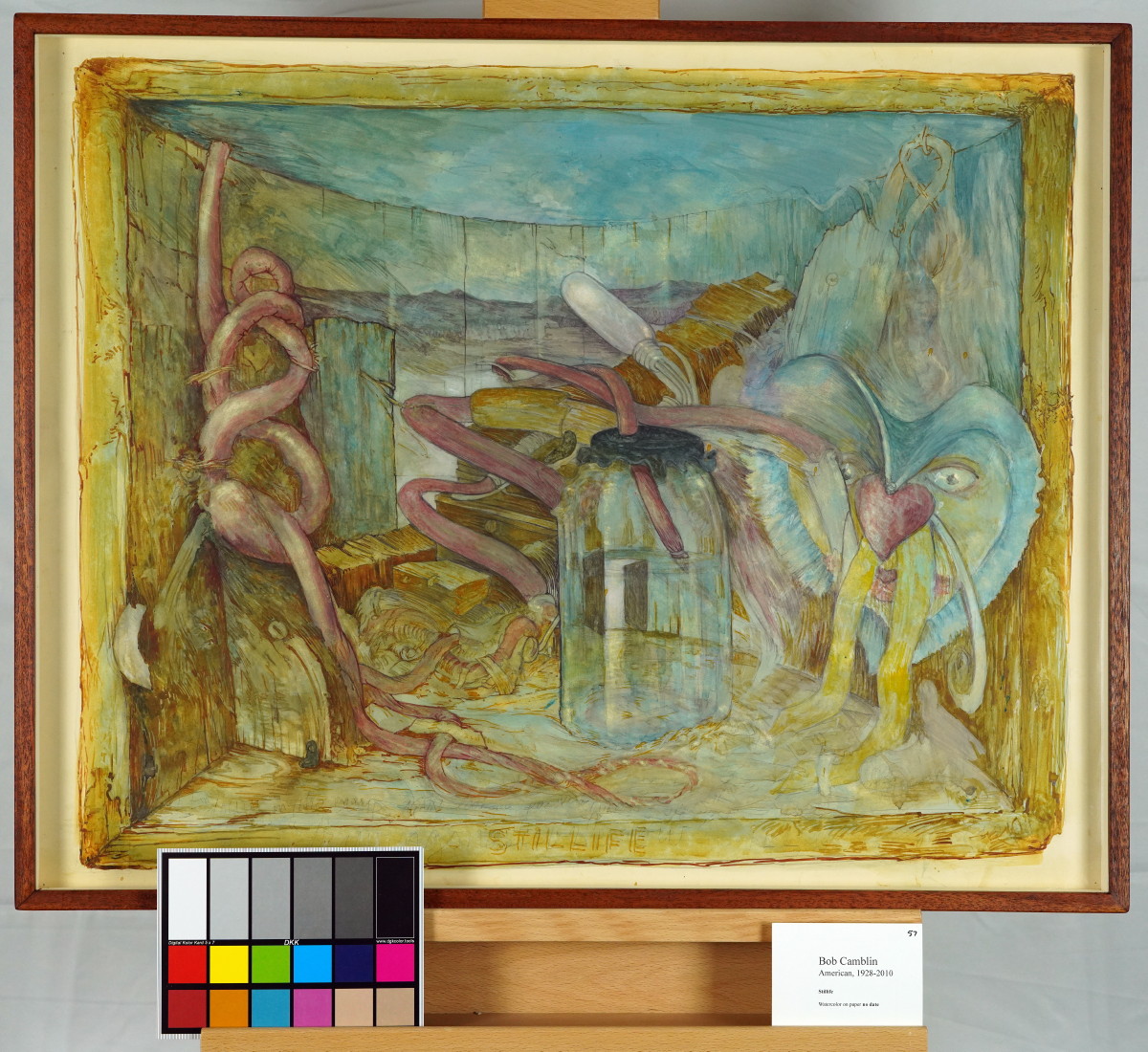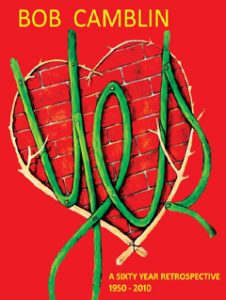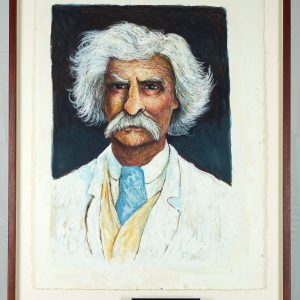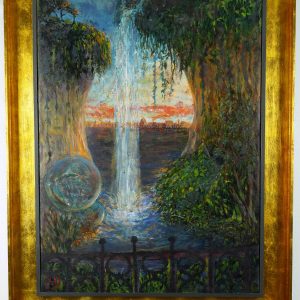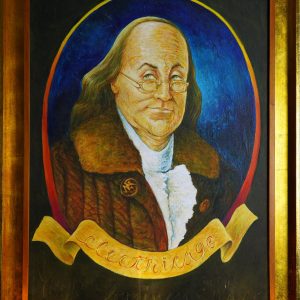Description
Still Life, 1986Pencil/watercolor
Signed anonymous (what’s the reason for this?)
23.75 x 29.75 (frame)
original, includes certificate of authenticity from ArtTrust
The painting “Stillife” presents a complex still life composition set inside a wooden box, with various objects that seem to defy a conventional arrangement. There are organic forms resembling twisted ropes or intestines, a glass jar in the center, an anatomical heart, a book, and other items. The colors are predominantly muted, with earthy tones of browns, blues, and purples dominating the palette, creating a somewhat surreal and unsettling atmosphere. The use of line and texture is deliberate, adding a tactile quality to the elements depicted.
From a Zen perspective, the juxtaposition of disparate elements within the artwork can be seen as a meditation on the nature of reality and attachment. The objects may symbolize the detritus of the material world, suggesting that clinging to material possessions or bodily forms ultimately leads to suffering. The chaotic arrangement may imply that life is inherently unpredictable and ever-changing, resonating with the Zen concept of impermanence. The box itself could represent the mind, where thoughts, desires, and experiences are stored, waiting to be emptied to achieve enlightenment.
In I Ching terms, this artwork might be associated with the hexagram “Ku” (Work on What Has Been Spoiled). The imagery could suggest decay, stagnation, or a need for cleansing and renewal. The twisted and tangled forms indicate past complications or unresolved issues that require effort to unravel and set right. The presence of a heart and jar may symbolize the containment of emotions or a call to confront one’s inner turmoil. The artwork could thus represent the necessity of transforming chaos into order and healing past wounds.
Combining the Zen and I Ching perspectives, the artwork presents a unified interpretation of inner reflection, transformation, and the struggle with the human condition. The surreal elements speak to the complexities of life, where the mind becomes a container for the detritus of past experiences. The organic shapes and anatomical references suggest that even the body is not immune to this process of decay. The artwork ultimately prompts viewers to confront their attachments, face inner chaos, and seek a path toward spiritual and emotional purification.
This artwork recalls the surrealist tradition of artists such as Max Ernst or Salvador Dalí, who often explored the subconscious mind through symbolic and dream-like imagery. The anatomical references and unsettling composition also echo the work of Francis Bacon, known for his depictions of the human form in states of distortion. The combination of still life and surrealism makes it unique, blending the traditions of memento mori (reminders of mortality) with contemporary concerns about identity and existentialism.
In summary, the artwork can be viewed as a reflection on the nature of existence, exploring themes of decay, renewal, and the mind’s entanglement with material forms. The composition invites meditation on impermanence and the inner journey toward clarity and release.
*Shipping cost will vary, please inquire at sales@camblingallery.com before purchasing.
Currently ships from Oregon, USA
Member of artnet? Apply for a discount! Inquire about intergallery and permanent loans for museums.
“Still Life” was featured in his Yes Retrospective
Reproductions of this drawing are available in multiple sizes!
Click here to use our high-resolution viewer!
This artwork is available with a non-fungible token to ensure traceability and transparency of provenance.
The royalty factor – Unlike traditional artworks, such as paintings, mosaics, statues, and the like, NFTs can be programmed to provide royalties to you every time the painting (and token) is sold and resold – for eternity. That mind-bending Camblin you sold could be worth millions one day and provide income for your great-great-great grandkids!
Anti-forgery – The central idea underpinning NFTs is that they are built on the blockchain, which is meant to offer advanced security. Think of it like an un-erasable and un-avoidable copyright.
Easy authentication – Another compelling aspect of NFT art and NFTs in general is the ability to quickly and easily authenticate items, as the record of ownership is scrupulously kept on the blockchain.
